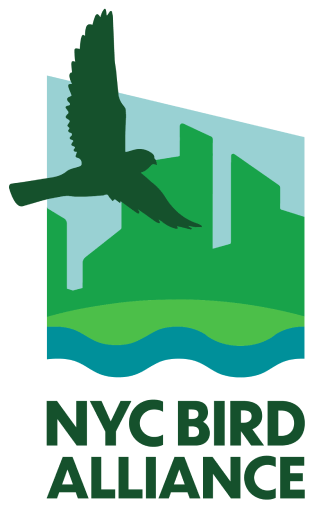What's behind the egg shortage? American Oystercatchers in the Rockaways
category: CONSERVATIONGENERAL
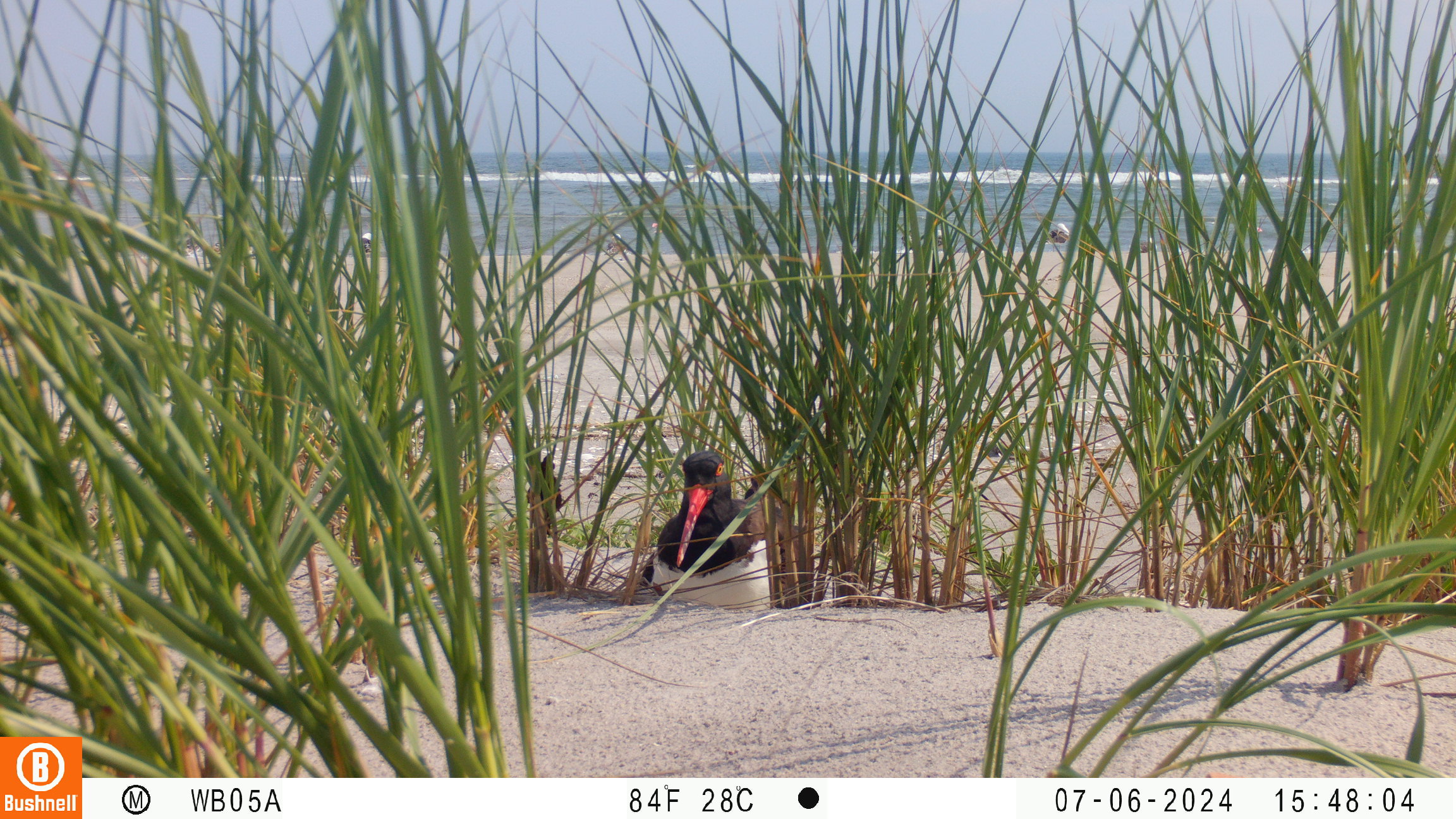
Since 2022, NYC Bird Alliance has managed a camera trap network in the Rockaway Peninsula to monitor American Oystercatcher nests and determine what causes them to fail so often.
Matthew Kleiner, Contributing Writer | May 1, 2025
"Ok, so we can see the egg here."
Matthew Kleiner, Contributing Writer | May 1, 2025
"Ok, so we can see the egg here."
Emilia Heaton holds the laptop close to her face, examining one of over a thousand photos she just downloaded. They came off the SD card of a camouflaged trail camera embedded in a cinder block, protected by a rope fence on a Queens beach. "It's a speckled pattern," she says, describing the American Oystercatcher egg and pointing at the screen, which reflects the bright August sun so strongly that it takes me a few seconds to identify the round object poking out of the sand, even with her finger right over it. She jumps through more files with expert speed, homing in on the moment the egg disappears from the nest.
"Egg, egg, egg, the egg's still there…" As she moves through the images, a Red-winged Blackbird and Canada Goose flit through the frame of the camera, which is programmed to take a burst of three photos every five seconds based on motion-sensing technology. None of these interlopers were interested in the egg.
"Hopefully we can actually see the take here."
Just then, a Great Black-backed Gull pops into view. Another few clicks, and the egg is gone—stowed in the Gull's beak.
Protecting American Oystercatchers
2024 was the third summer Heaton, a seasonal field biologist for NYC Bird Alliance, monitored American Oystercatcher nests on the four-mile stretch of Rockaway Peninsula. As I shadowed her, she showed the energy, curiosity, and expertise of a seasoned field biologist, and I struggled to keep up with her lithe, springing steps down the beach. Heaton is responsible for monitoring and maintaining a camera trap network: 25 motion-sensor cameras that take hundreds, or even thousands, of photos each week. These cameras monitor 24-hours a day to document predators and other disturbances to American Oystercatcher nests, contributing to a treasure trove of data on the species, its colony, and its survival in the Rockaways.
With their black and white plumage, beady red-ringed eyes, and distinctive long orange beaks, American Oystercatchers are found along the Pacific and Atlantic coasts of North and South America. Their range extends up the coasts of the northeastern U.S. during their breeding season, with hundreds of birds summering as far north as Massachusetts before their winter migration down to the warmer climate of the Gulf Coast. This monogamous species boasts very strong site fidelity, meaning that couples return to the same beaches year after year to breed. Once a couple lays eggs—commonly three to a clutch, but sometimes as many as four—the mother and father alternate sitting on the nest, which is really just a small scratched-out dent in the sand, while the other forages for food. On our local beaches, the first eggs are usually laid in late April or May and the last in early August.
Breezy Point Beach wraps around the western tip of Rockaway Peninsula, offering views across the choppy Atlantic and back towards Coney Island, Brighton Beach, and, farther into the haze, distant Manhattan. For seabirds, the beach is a popular nesting area. Piping Plovers, Common Terns, and American Oystercatchers are among the birds that call this stretch of shore their summer home.
When Emilio Tobón, NYC Bird Alliance’s Conservation Field Biologist, began monitoring American Oystercatchers on the Rockaways in 2011, the colony was in good health, hosting robust numbers of breeding couples and showing high rates of successful hatches and fledged chicks. The next 10 years, however, brought concerning developments.
"The number of birds nesting in the area has been steadily increasing since I started," Tobón recalled. "But the productivity—that is, the number of chicks that every pair fledges—has started to decline… and it is starting to decline very rapidly."
Based on Tobón’s observations of nest loss, he developed a theory that the abundance of predators was increasing alongside the size of the colony. "I suspected from the very beginning it was predation, either by natural predators (like raccoons or opossums), introduced predators (feral cats), or by humans. But I couldn't tell. That was the problem—I had no idea!” he explained. “I would visit the sites twice a week; one week the nest was there, the next the nest was gone."
So he pushed for a camera trap study to provide data on predators and try to catch them red-handed—or red-snouted, or red-beaked—taking eggs from the nests.
Gathering Data
After successfully applying for a permit from the National Park Service (NPS), which administers the beaches on Rockaway Peninsula, NYC Bird Alliance launched a pilot camera trap study in the summer of 2022 to monitor six nests on Breezy Point Beach. When I met up with Heaton in 2024, the project had grown to 25 camera traps monitoring over 50 nests between Breezy Point, Fort Tilden Beach, and Jacob Riis Park. Tobón, Heaton, and their team at NYC Bird Alliance hoped that the wealth of data provided by the camera traps—a running log of every raccoon, opossum, crab, human, dog, bird, or other source of disturbance caught on camera—would help to illuminate what exactly was happening on the beaches.
Heaton has now logged hundreds of thousands of photos downloaded off the SD cards. An online platform called Wildlife Insights helps tag each individual photo to document what set off the motion sensor, using artificial intelligence to assist in species identification. While the program is helpful in providing a cursory categorization of images, says Heaton, it still requires a lot of error correction by a human hand; Heaton must verify and correct the hundreds of thousands of bird species that fly, walk, or flit into frame, not to mention the nighttime fishermen, illegally off-leash dogs, and tumbling beach litter.
The cameras provide an unprecedented level of detail on the number of predators roaming the beaches, especially at night. Tobón, who has now worked with American Oystercatchers for 15 years, is anxious to finally have a visual dataset to demystify the question of predation. "Thanks to Emilia, we now know very precisely what kinds of predators are on the beaches and how they interact with the Oystercatchers."
At Breezy Point, tracks that had been observed around predated nests were long assumed to have been left by raccoons, but the camera records showed another culprit.
"Raccoon tracks and opossum tracks look really similar, and they're really hard to identify in sand," said Heaton. "So, no one really knew that opossums were a problem before the cameras showed them predating all the eggs basically."
Similarly, while many published scientific papers on the topic have pointed to gulls as a primary predator during the egg phase, the camera images have recorded gulls generally taking eggs only after they have been determined to be unviable and consequently abandoned by the parents, as in the case of the stolen egg Heaton revealed on her laptop.
Before the cameras, nests were lost from one day to the next with minimal clues as to how and exactly when. The photos allow Heaton and Tobón to identify predators not only by species but often as individuals. Different coat patterns of feral cats (which have proven to be the main threat to nests on Fort Tilden Beach) reveal precisely which individuals are responsible for which losses. While individual opossums and raccoons are much harder to differentiate, the timestamps on photos can be used to count predators. If sightings occur simultaneously at different parts of the beach, that "indicates that there are multiple individuals," according to Heaton. On the other hand, as occurred one night in 2023, "it definitely was one opossum that went down the beach and ate multiple eggs because of the timestamps.”
Protecting our shorebirds
A key question that NYC Bird Alliance is hoping to answer by correlating predator information with nesting data is if and how the Rockaway colony is managing to cope naturally with increasing predators. One key observation? Adaptability. The birds have delayed key steps of the breeding process based on higher perceived risk of predation. This could be responsible for a recent positive trend of recovery in the colony—after a decade of dropping productivity rates.
Tobón’s theory, which he plans to publish in an upcoming paper, posits that when a couple loses a nest to predation, they may wait for a period of lower perceived threat to renest again. "It's what we call phenotypic plasticity," explained Tobón. "The birds are able to do things differently in order to survive and produce more babies." So far, the data bears out this idea. "When there is a lot of pressure from predators, they tend to keep the colony for longer," said Tobón. "It's very important for the survival of the entire colony. If the Oystercatchers are able to adapt to all these changes and all these pressures, then they might be able to maintain the colony and be successful."
NYC Bird Alliance also plans to share the data with the National Park Service, which has the authority to implement management measures on the beaches. "Based on the results we have from this study, we can talk with NPS and tell them what's going on, and they can act accordingly," said Tobón. And because American Oystercatchers are an “umbrella species,” whose study and protection can cover other species with similar habits in the area, such as the Piping Plover (which has been classified as endangered in New York State), this research could have even greater implications for protecting birds.
"But we also want to go deeper," stressed Tobón, emphasizing the rich scientific potential of the "well of information" that has been gathered. "We want to know how the Oystercatchers are coping," he said. "In addition to knowing how the Oystercatchers are coping, there are a lot of things to do with the data to protect this vulnerable species."
"The impacts of this work go far beyond the borders of NYC—the birds we protect that hatch here spend most of the year elsewhere in the Americas,” he added. “The work we're doing in NYC has hemispheric impact".
As American Oystercatchers and other beach-nesting birds arrive to our New York City beaches this summer, remember to #ShareTheShore! Follow these guidelines to save our shorebirds and protect this vulnerable population.
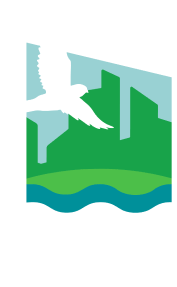
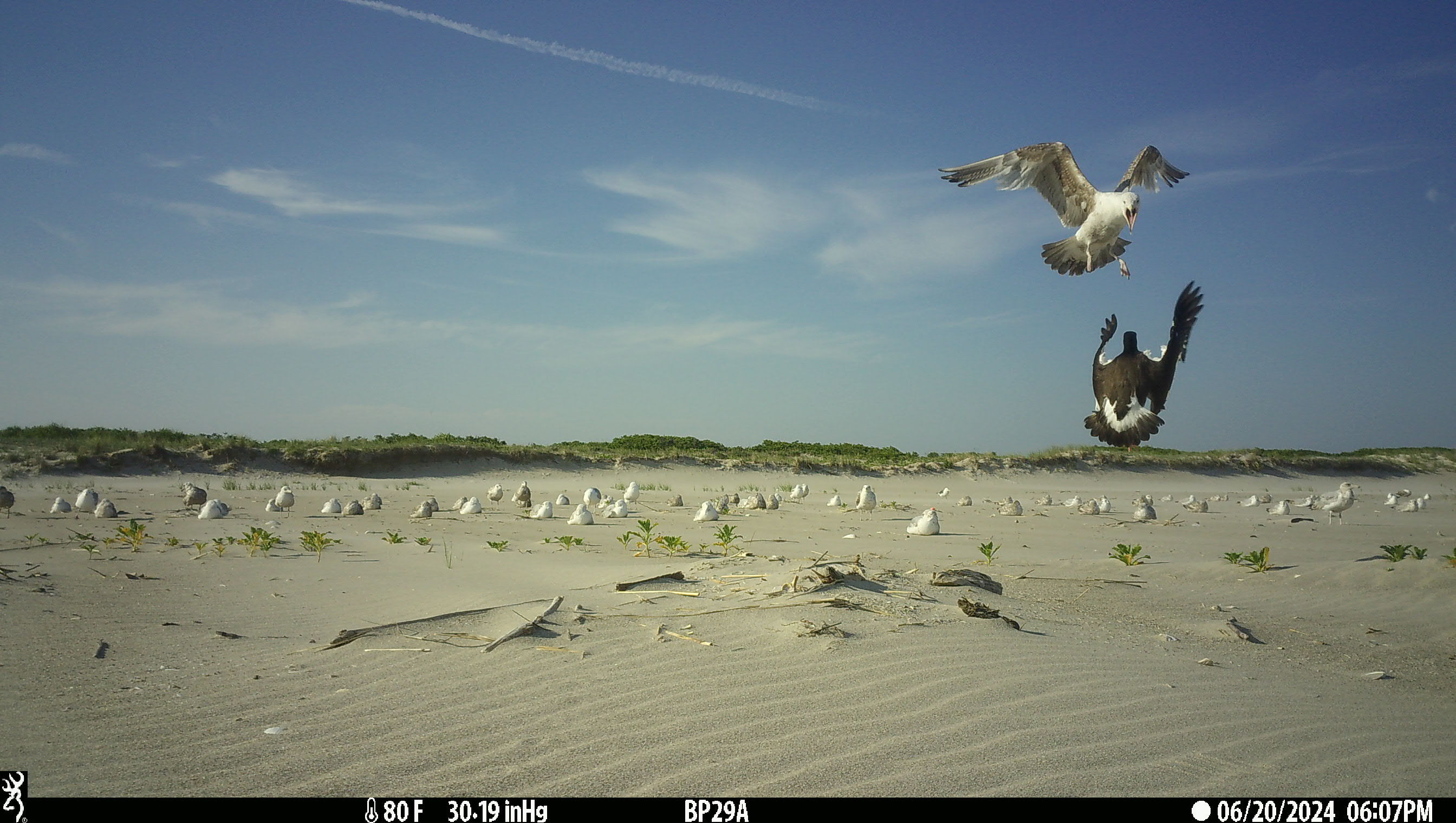
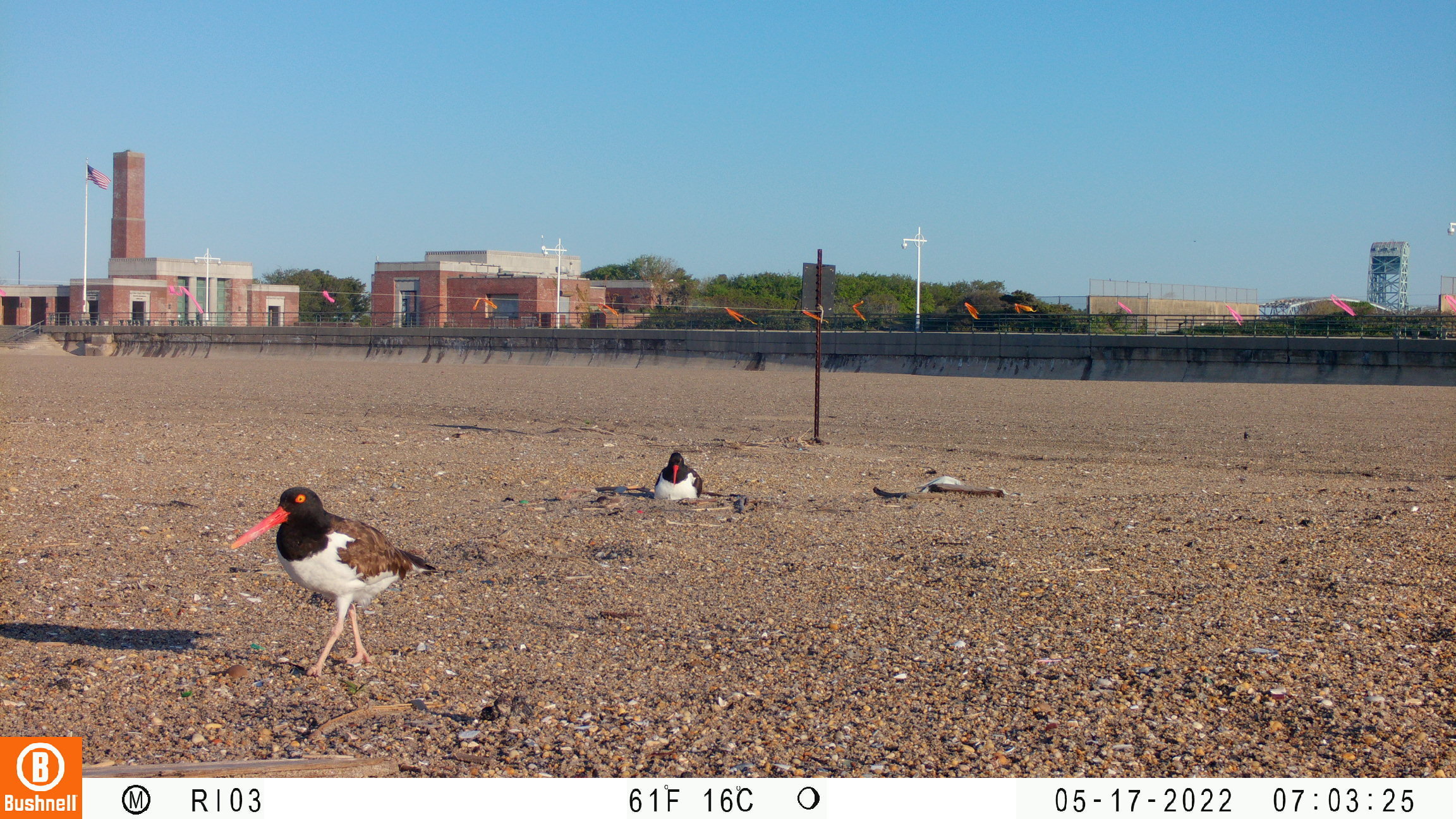
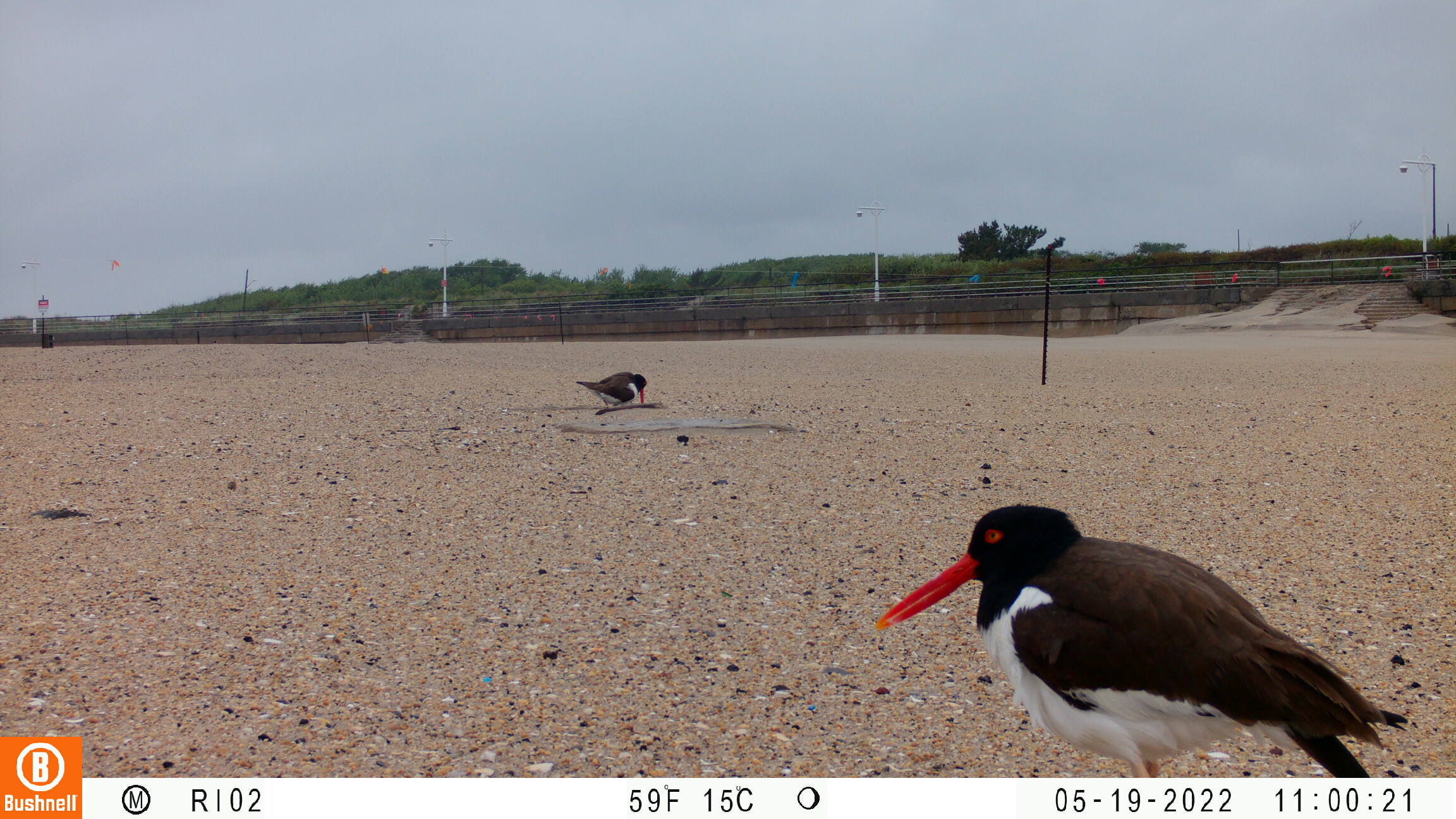
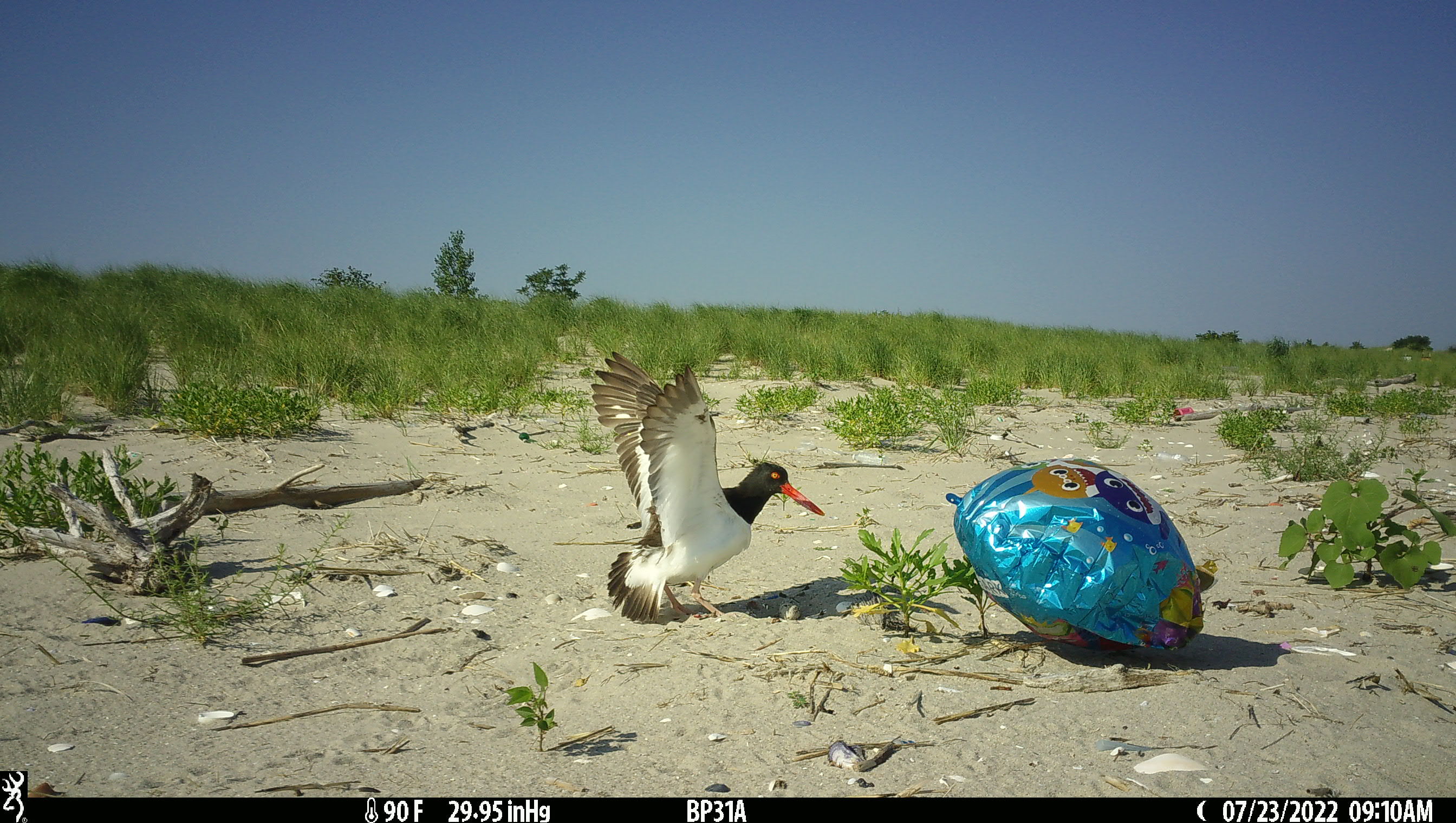.jpg)
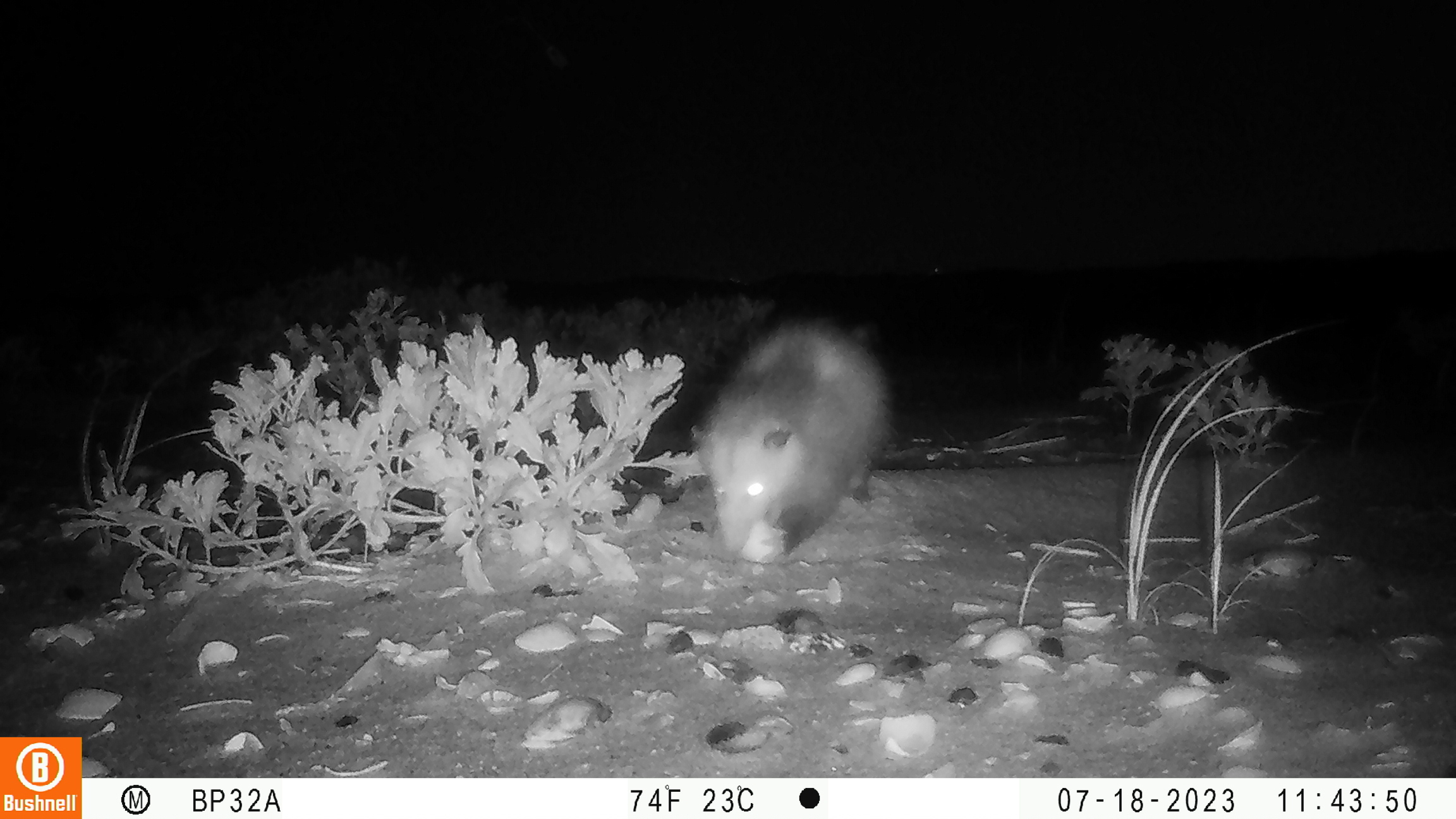.jpg)
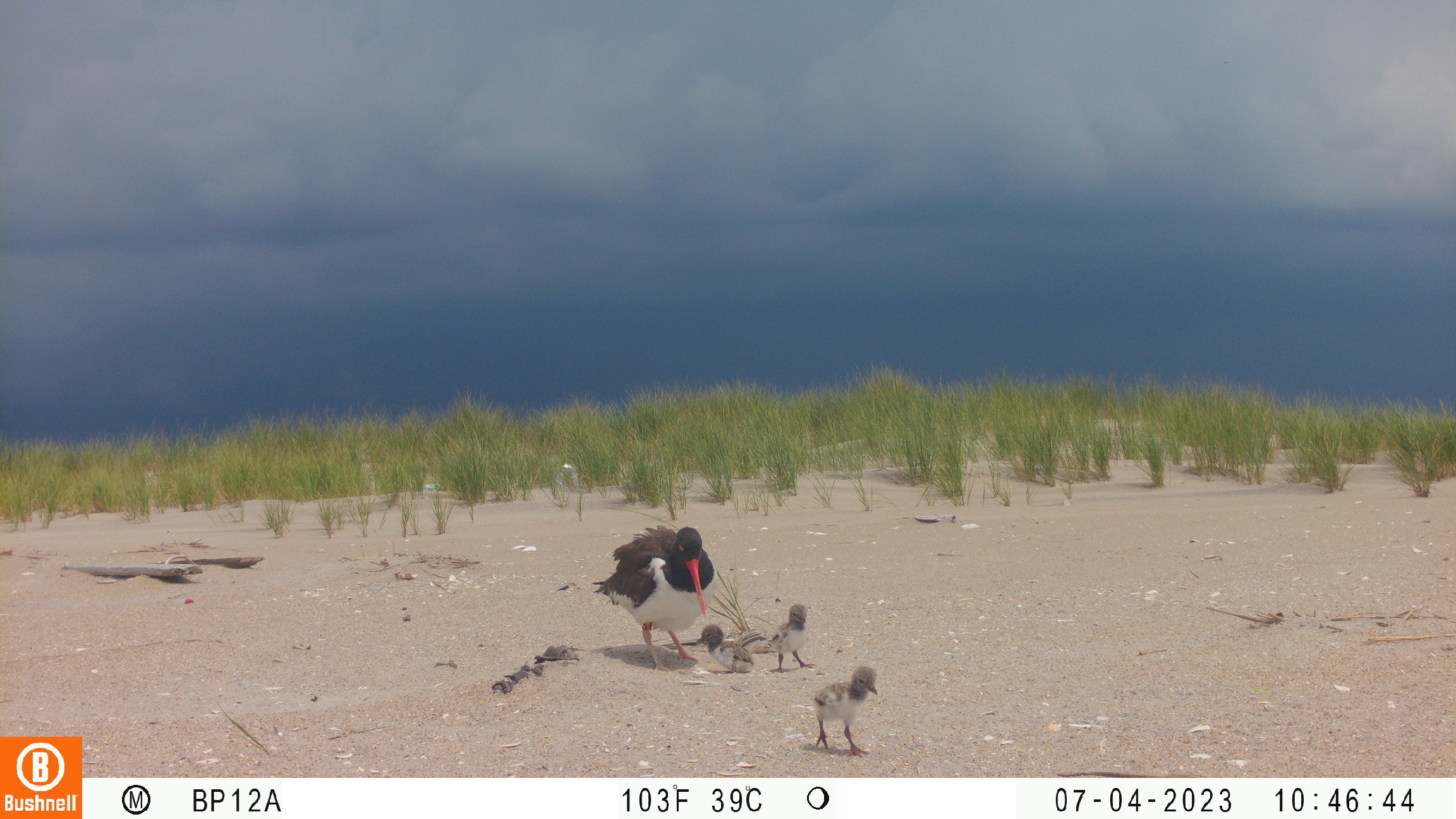.jpg)
